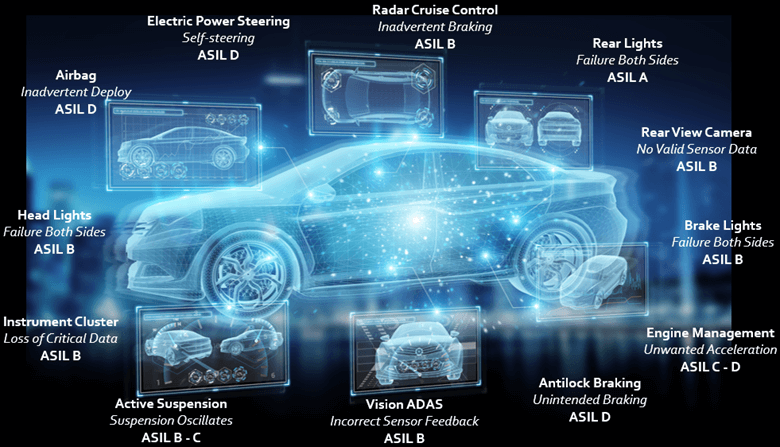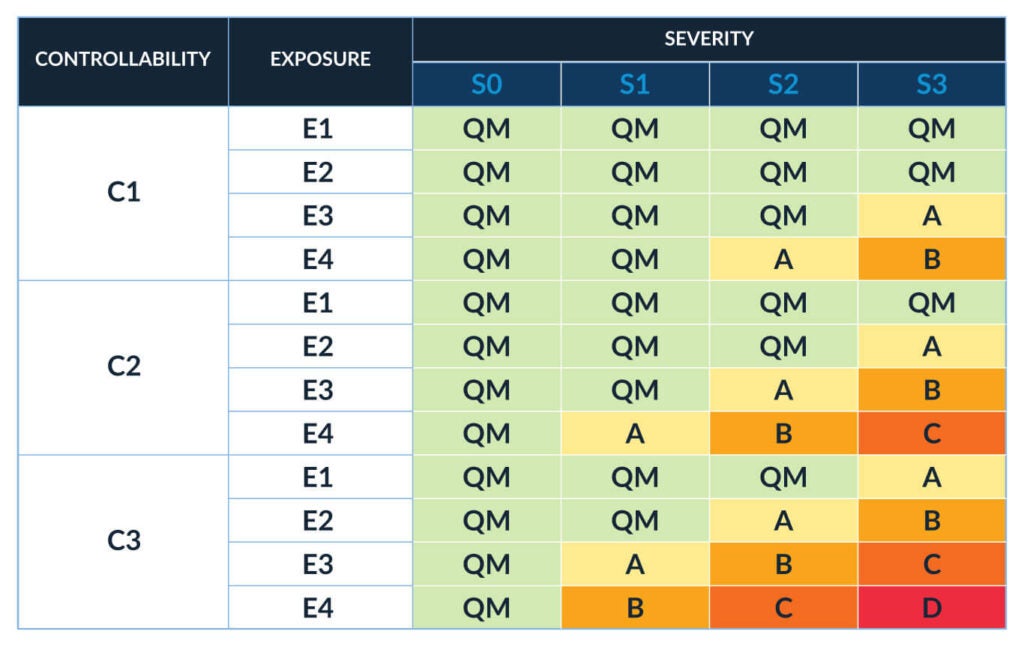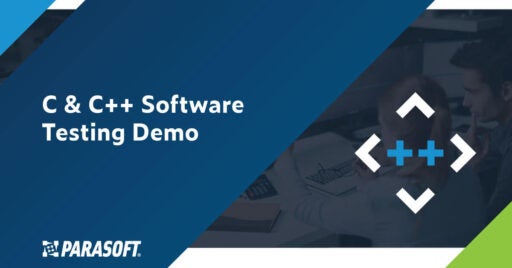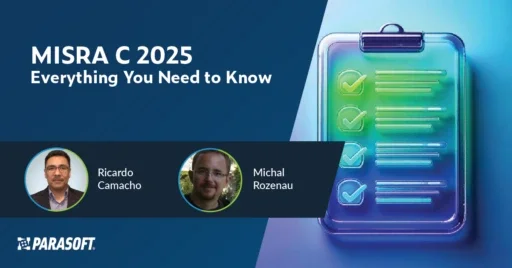Use Agentic AI to generate smarter API tests. In minutes. Learn how >>
Jump to Section
Achieve ASIL D Compliance With Automated Testing
Make life easier for everyone: leverage automated testing. A unified, fully integrated solution for C/C++ software development makes ASIL D compliance less tedious, easier to visualize, and more reliable.
Jump to Section
Jump to Section
ISO 26262, the international standard for functional safety, governs software safety requirements across all automotive product development processes. Though adapted from IEC 61508, modern regulations have become much stricter about compliance. As such, there are grades of compliance to achieve depending on what the automotive product does.
You can read more here about ISO 26262 and Parasoft’s role in compliance, but let’s discuss how to achieve ASIL D compliance. It is, after all, the most difficult aspect of ISO 26262 compliance to achieve. How do Parasoft tools ease this process?
This blog will answer the following questions.
- What is the ISO 26262 standard?
- Why is ISO 26262 needed?
- What are the ASIL D requirements?
- How do you achieve ASIL D compliance?
- Where does Parasoft fit into this workflow and ecosystem?
What Is the ISO 26262 Standard?
Many Parasoft blogs, whitepapers, and webinars cover ISO 26262 largely due to how important the standard is in automotive safety. It can be broken down into several key concepts.
- A standard that delivers guidance for OEMs on automotive software safety life cycle activities.
- Includes safety analysis, requirements analysis, quality management, verification, validation, and more.
- Incorporates 12 parts covering vocabulary, life cycle, development protocols, and other important aspects of ISO 26262 compliance.
The reason why the ISO 26262 standard matters so much is simple. It keeps us safe in automobiles.

What Are ASIL A – D?
ASIL or, automotive safety integrity level, classifies risk regarding functional safety with road vehicles. Various parts of an automobile receive different ASIL ratings. If something is rank A, the safety standards are ranked lower. If they are rank D, however, the software and/or hardware must adhere to the most rigorous safety standards.
Things such as the rear lights or even the instrument cluster don’t rank above ASIL B. Electric power steering and ABS brakes, due to how much they affect vehicle operation, rank at ASIL D for safety compliance. Satisfying these requirements must make use of solutions like Parasoft C/C++test to ensure compliance.
See Parasoft C/C++test in action!

What Are ASIL D Requirements?
This section of risk classification corresponds to the highest level. Any system or component made to ASIL D specifications necessitates high risk mitigation and reduction. In general, developers look at 3 key determinants when considering ASIL D compliance.
- Severity of Incident. Upon a failure, how would passengers, drivers, and nearby people and vehicles be affected? Just how bad would the impact of the damage be?
- Probably or Frequency of Exposure. How likely is it for something to occur that could cause failure?
- Controllability of Failure. If a system or product does end up failing, developers must consider the way in which something fails. Perhaps you can avoid excess damage via quick reactions or failsafe measures.
The above chart details exactly what entails ASIL D safety requirements. The biggest challenge developers face when trying to achieve ASIL D compliance is how many assumptions they must make as they develop the product or service.
How Do You Achieve ASIL D Compliance?
Satisfying ASIL D safety functions requires several tests to help expose, prevent, and fix any errors. Parasoft C/C++test helps to root these out with the following traits:
- Unit testing. Helps teams develop, execute, optimize, and maintain unit tests.
- Static analysis. Performs data flow analysis, control flow analysis, metrics analysis and more.
- Requirements traceability. Links tests and code to requirements for better visibility.
- Code coverage. Shows which code has been executed using a test run.
- Runtime error. Locates memory leaks, access errors, corruptions, and so on.
But the way in which you implement these elements doesn’t need to be difficult or inefficient. In fact, Parasoft’s solution for C/C++ software development makes the process smoother, quicker, and more accurate.
See Parasoft C/C++test in action!
The Perks of Parasoft C/C++test
Automate Code Analysis
Allows for compliance monitoring at any and all times. Leverage hundreds of embedded rules such as MISRA C:2008, AUTOSAR C++14, MISRA C:2012, and more. A graphical RuleWizard editor even allows for custom rules.
Identify Bugs Without Execution
Being able to locate issues without executing code is a game changer. In fact, with things like embedded code, performing a thorough runtime analysis for bugs becomes both possible and effective.
Enhanced Code Review
In order to discover code defects, all teams should practice code review. It does require significant effort, but Parasoft DTP Change Explorer helps make this process more convenient.
Integration & Unit Test With Coverage Analysis
Automation is critical if you want to make your compliance protocols more agile and effective. Specific GUI widgets simplify test management and creation. A Test Case Wizard even empowers developers to quickly make black box functional tests across a diverse function set without stressing about embedded data dependencies. What’s more, a Data Source Wizard parameterizes test cases and stubs and you can review them in Stub View.
Just the Beginning of Parasoft’s Power
This is just a peek into the immense power of Parasoft’s collection of solutions. You can read more here about achieving ASIL D compliance with C/C++test, but it really pays to see the solution and capabilities in action.
See how your automotive software development team can satisfy ASIL requirements and achieve functional safety.
“MISRA”, “MISRA C” and the triangle logo are registered trademarks of The MISRA Consortium Limited. ©The MISRA Consortium Limited, 2021. All rights reserved.




